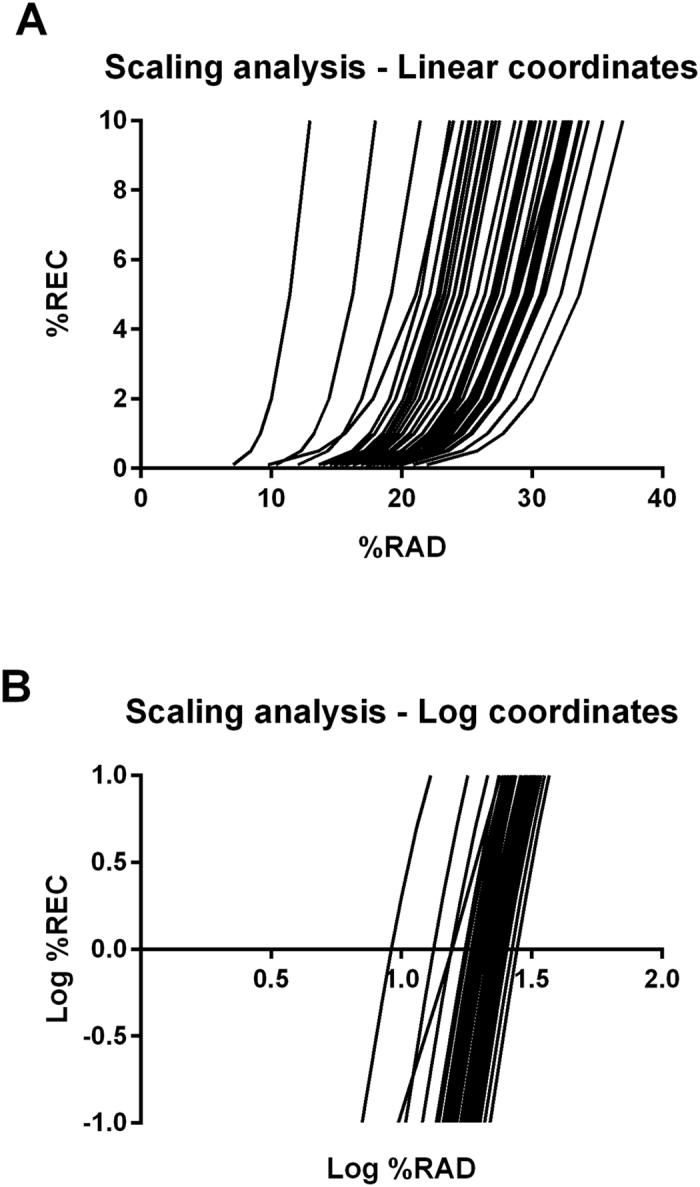Figure 2. Preliminary scaling analysis.

A fundamental prerequisite for an appropriate estimation of the RQA variables is a sparse percentage of REC, usually within the range 0.05–2%. In logarithmic coordinates, this range of values is expected to be within the linear tract of the exponential scaling function of the variable %REC vs. the variable %RAD. When this prerequisite is satisfied, the estimate of the RQA variables can be made with any constant value of the %RAD that yields such a sparse % REC. However, this procedure is not appropriate in our experimental conditions. Indeed, the exponential relationship depends on the epoch considered, thus giving rise to a broad spectrum of functions (A). Consequently, a constant value of the %RAD may be appropriate for some epochs but totally inadequate for all the other ones (B). Our preliminary scaling analysis visually highlights a linear tract (in logarithmic coordinates), common to all the epochs considered, for values of %REC around 1.0 (0.0 in the log-log plot, B). Therefore, we set the %REC to the constant value 1 (corresponding to a sparse recurrence matrix), and considered the %RAD as a variable.
